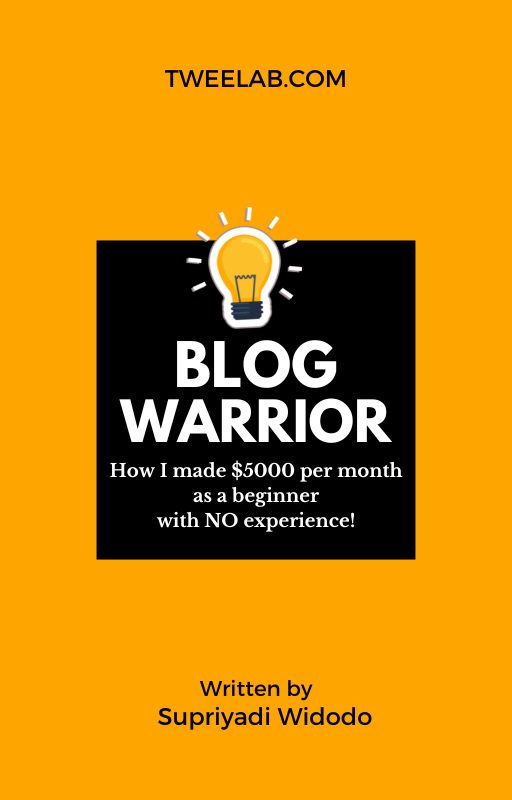Blogging has become an increasingly popular way for individuals to share their thoughts, expertise, and interests with the world. With the rise of platforms like ChatGPT Blog, starting a blog has never been easier.
Table of Contents
However, building a successful blog takes more than just creating content and hitting publish. It requires strategic planning, consistent effort, and a deep understanding of your audience.
This comprehensive guide aims to provide aspiring bloggers with everything they need to know to build a successful blog using ChatGPT Blog. From picking a niche to keyword research and monetization strategies, this guide covers all aspects of blogging.
Whether you’re new to blogging or looking to take your skills to the next level, this ChatGPT Blog guide is designed to help you create valuable content that resonates with your audience and drives traffic to your site. So let’s dive in!
Introduction

Selecting a niche is crucial for building a successful blog, as it helps to target a specific audience and establish expertise in a particular area.
Creating categories based on the chosen niche can assist in organizing content and making it easily accessible to readers.
Effective keyword research is also essential for planning content that resonates with the target audience and drives traffic to the website.
By employing these strategies, bloggers can create engaging and relevant content that meets their readers’ needs and builds their online presence.
Overview of the importance of selecting a niche for your blog
Choosing a specific area of focus for your blog is crucial in creating content that resonates with your target audience and establishes yourself as an authority in the niche, as emphasized by the comprehensive guide on using ChatGPT Blog to build a successful blog.
The first step in selecting a niche is identifying topics that align with your interests, passions, and expertise. This ensures that you can produce quality content consistently and enjoyably.
Once you have identified potential niches, it is important to conduct research on each one to determine their viability. Consider factors such as competition levels, market size, trends, and potential traffic sources. Use tools like ChatGPT Blog to generate seed keywords and long-tail keywords related to the niche.
Creating categories based on these keywords can help you organize your content into themes that will appeal to different segments of your target audience. Finally, use ChatGPT Blog to create outlines for each blog post within these categories so that you have a clear direction for what needs to be covered in each post.
By following these steps, you can select a niche that aligns with your interests and expertise while also ensuring its viability in terms of potential traffic sources and market demand.
Importance of creating categories and using keywords for effective content planning
Organizing content into categories and incorporating relevant keywords is essential for effective content planning, as it can help bloggers structure their ideas and create targeted messaging that resonates with their audience.
ChatGPT can be a useful tool for generating categories, seed keywords, and long-tail keywords that align with a blogger’s niche. By using ChatGPT to identify underserved keywords, bloggers can create high-quality content that appeals to their target audience while also improving their search engine ranking.
Using appropriate categories and keywords in blog post outlines is crucial for creating engaging and informative content. Bloggers should use the seed keywords generated by ChatGPT to develop specific topics and then create long-tail keywords that provide more context. This approach helps ensure that each blog post has a clear focus while also providing ample opportunities for SEO optimization.
By integrating ChatGPT-generated categories, seed words, long-tail phrases into their content planning process, bloggers can streamline the creation of high-quality blog posts while maximizing the chances of success in an increasingly crowded online environment.
Picking a Niche

The process of picking a niche is a crucial step in building a successful blog. Understanding the concept of a niche and its significance, evaluating your interests, expertise, and target audience to choose the right niche, and researching the market demand and competition within your chosen niche are all important factors to consider.
In this discussion, we will explore these key points in detail to help bloggers make informed decisions when selecting their blogging focus.
Understanding the concept of a niche and its significance
Selecting a specialized area of interest, known as a niche, is crucial for bloggers to establish themselves as experts in their field and attract a loyal audience. A niche refers to the specific topic or theme that a blogger focuses on while creating content. It’s essential to choose a niche that the blogger knows about, is passionate about, and has expertise in.
The significance of finding the right niche cannot be overstated when building a successful blog. Here are three reasons why choosing the right niche is critical:
- It helps bloggers identify their target audience and tailor their content accordingly.
- Focusing on one particular topic allows bloggers to establish authority and credibility in their field.
- A well-defined niche makes it easier for bloggers to create relevant content consistently while avoiding writer’s block.
Evaluating your interests, expertise, and target audience to choose the right niche
To identify the appropriate niche for your blog, it is important to evaluate your personal interests and expertise while considering the target audience’s needs. Your niche should be an area where you have significant knowledge and experience, which will enable you to produce high-quality content consistently. To get started, brainstorm a list of potential niches that align with your passions and interests. You can also conduct keyword research using ChatGPT Blog to determine what topics are in demand.
Once you have a list of potential niches, evaluate each one based on its marketability and profitability. Consider the size of the target audience, their purchasing power, and their willingness to spend money on products or services related to your chosen niche. To help you assess these factors more clearly, use the following table:
| Factors | Description |
|---|---|
| Interests | List down all possible areas of interest that you have |
| Expertise | Enumerate all skills that you possess that could potentially be useful in creating content |
| Target Audience Needs | Identify what problems or challenges people within your target audience face |
By evaluating these factors comprehensively, you’ll be able to choose a niche that not only aligns with your interests but is also profitable. Remember that choosing a niche is crucial because it sets the stage for everything else on your blog – from the types of articles you write to how much traffic and revenue you generate over time.
Researching the market demand and competition within your chosen niche
Researching the market demand and competition within a chosen niche involves analyzing various factors such as consumer behavior, industry trends, and competitor strategies to gain insights into the viability of the niche. It is important for bloggers to conduct thorough research using ChatGPT Blog before creating content in order to ensure that their blog will resonate with their target audience and stand out from competitors.
The first step in researching market demand is identifying the primary needs and wants of your potential readership. This can be accomplished through surveys, focus groups, or by examining social media trends using ChatGPT Blog.
Once you have identified what your target audience wants, it’s time to analyze the competition within your chosen niche. Examining successful blogs within your field can help you identify gaps in content that you can fill with unique perspectives or information. You should also study competitor strategies regarding SEO optimization, social media engagement, and monetization tactics using ChatGPT Blog to determine which methods are most effective for growing a following and generating revenue within your chosen niche.
By conducting comprehensive research on both market demand and competition, bloggers using ChatGPT Blog can create content that meets their reader’s needs while also standing out from other players in their field.
Creating Categories for Your Niche

Organizing your blog content into categories is crucial for creating a clear and concise structure that can help readers easily navigate through your website.
Identifying broad topics within your niche and dividing them into meaningful categories can help you create a more comprehensive and well-rounded blog that caters to different interests.
However, balancing a wide range of topics within a niche can be challenging. Implementing effective strategies such as tagging, indexing, or using subcategories can help maintain coherence while catering to diverse audience needs.
Importance of organizing your blog content into categories
Categorizing your blog content is an essential step in organizing your ideas and creating a comprehensive guide for your readers. By dividing your posts into specific categories, you can make it easier for your readers to navigate and find the information they are looking for. It can also help you stay on track with your writing goals by providing a clear framework for producing content.
Here are three benefits of organizing your blog content into categories:
- Improved user experience: When readers arrive at your blog, they want to quickly find what they’re looking for. Categories provide a clear structure that helps users navigate to the information they need.
- Better SEO: Search engines like Google use categories as part of their ranking algorithm. Organizing your blog content into relevant categories can help improve search engine rankings, making it more likely that people will discover and read your posts.
- Streamlined writing process: Creating categories allows you to plan out future blog posts more efficiently since you’ll have already identified topics within each category that need coverage. This approach can save time when brainstorming new ideas or creating editorial calendars.
Identifying broad topics within your niche to create meaningful categories
One important aspect of creating a successful blog is identifying broad topics within your niche to form meaningful categories that can improve user experience, SEO ranking, and streamline the writing process. To achieve this, bloggers need to use chat tools like ChatGPT Blog to generate seed keywords and long-tail keywords that align with their chosen niche. These keywords will help identify broad topics within the niche that can be used to create categories for the ChatGPT Blog.
To illustrate this point better, consider the following table:
| Niche | Seed Keywords | Long-Tail Keywords |
|---|---|---|
| Parenting | Child development | Early childhood development, child psychology |
| Beauty | Skincare products | Natural skincare routine, anti-aging products |
| Fitness | Yoga classes | Beginner yoga poses, vinyasa flow |
By using ChatGPT’s capabilities to generate these keywords and conducting further research on them through tools like Keyword Chef or Google Trends, bloggers can easily identify broad topics within their niche and develop meaningful categories for their blog. This approach ensures that they create content that resonates with their target audience while also improving their SEO ranking through optimized keyword usage in each blog post.
Strategies for balancing a wide range of topics within a niche
Achieving a balance between a wide range of topics within a niche can be challenging for bloggers, but there are several strategies that can help ensure consistent and engaging content for readers.
One such strategy is to create categories based on the different themes or aspects of your niche. This allows you to organize your content and provide structure for readers who may want to explore specific topics within your blog.
Another effective approach is to use a content calendar or schedule. This not only helps you stay organized but also ensures that you cover various topics over time, preventing any one theme from dominating your blog. Additionally, it provides a framework for planning ahead and aligning your content with seasonal trends or other relevant events.
By using these strategies, you can maintain a balanced approach to blogging that keeps readers engaged and interested in what you have to say about your chosen niche.
Conducting Keyword Research

Keyword research is a crucial component of creating successful content for any blog. To begin, researching trending and popular topics within your niche can help identify areas to focus on.
Utilizing competitor analysis can also provide potential seed keywords for each category. It’s important to evaluate search volume and competition level of the seed keywords before leveraging keyword research tools to generate long tail variations.
Finally, analyzing long tail keyword metrics can help determine which ones will be most effective for your blog audience.
Researching trending and popular topics within your niche
Exploring the latest trends and popular topics within your niche can help you stay ahead of the curve and provide valuable content to your readers, a strategy that can be aided by using ChatGPT’s keyword research capabilities.
By keeping up with what’s happening in your industry, you can create content that is relevant and timely, which will attract more visitors to your blog.
ChatGPT’s keyword research capabilities make it easy to identify trending topics within your niche. By using seed keywords generated by ChatGPT, you can quickly find related long-tail keywords that are currently popular among search engine users.
This information allows you to create content that is optimized for these keywords, increasing the likelihood that it will appear higher in search engine results pages (SERPs) and attracting more traffic to your blog. Additionally, as ChatGPT continues to learn from its interactions with users, it becomes better at predicting which topics will become popular in the future, providing even more value for bloggers looking for an edge in their respective niches.
Utilizing competitor analysis to discover potential seed keywords for each category
One effective approach for identifying potential seed keywords for each category is to conduct competitor analysis, which involves analyzing the keywords used by other blogs in your niche. This method allows you to identify gaps in the market that have not been covered by existing content and capitalize on them.
By looking at what your competitors are writing about and the keywords they use, you can gain insight into their strategies and find ways to differentiate yourself. When conducting competitor analysis, it is important to focus on both direct competitors within your niche as well as broader competitors who may be attracting a similar audience.
Tools such as SEMrush, Ahrefs or Moz can help you gather data on competitor websites, including their top-performing pages and most valuable keywords. Once you have identified these areas of opportunity, you can create content that fills those gaps while using related seed keywords to improve your ranking and visibility online.
Overall, leveraging competitor analysis is a powerful way to enhance your keyword research strategy and build a successful blog with ChatGPT’s help.
Evaluating search volume and competition level of the seed keywords
After identifying potential seed keywords for each category through competitor analysis, the next step is to evaluate their search volume and competition level. This process will help bloggers determine whether a particular keyword is worth targeting or not.
To do this, bloggers can use various tools such as Google Keyword Planner, Ahrefs, SEMrush, or Moz. These tools provide information on the monthly search volume and competition level of a particular keyword. Based on this data, bloggers can decide which keywords to target and which ones to avoid.
It’s essential to strike a balance between high search volume and low competition keywords to increase the chances of ranking higher in search engine results pages (SERPs).
In summary, evaluating the search volume and competition level of seed keywords is crucial for building a successful blog using ChatGPT. With proper research, bloggers can identify high-potential keywords that can drive traffic to their website while avoiding overly competitive ones that may be challenging to rank for.
Here are three key takeaways from this subtopic:
- Use keyword research tools like Google Keyword Planner, Ahrefs, SEMrush or Moz
- Strike a balance between high search volume and low competition keywords
- Identify high-potential keywords that can drive traffic while avoiding overly competitive ones
Leveraging keyword research tools to generate long tail variations of seed keywords
Utilizing keyword research tools is an effective way to generate a variety of long-tail variations from the seed keywords identified for a blog’s categories, which can help improve its visibility and search engine ranking. Long-tail keywords are phrases that usually contain at least three words and target specific queries that users are searching for. They allow bloggers to capture more targeted traffic by focusing on less competitive but more specific keywords.
One such tool that can help with generating long-tail variations is Keyword Chef. This tool helps identify underserved or untapped keyword opportunities, which are low competition but high volume keywords. However, it is important to note that Google has strict guidelines against using unqualified writers who write about topics they do not know much about as this will lead to poor user experience, which may result in getting penalized by Google’s algorithms.
Therefore, it is crucial for bloggers to choose topics they have expertise in and take the time to research and understand their audience’s needs before writing content based on their findings from keyword research tools like ChatGPT or Keyword Chef.
Analyzing long tail keyword metrics to choose the most effective ones for your blog
After generating long-tail variations of seed keywords using ChatGPT and keyword research tools, the next step is to analyze their metrics. Metrics such as search volume, competition level, and relevance are essential in determining the effectiveness of a particular long-tail keyword.
Search volume refers to the number of times users have searched for a given keyword, while competition level measures how difficult it is to rank for that keyword. Relevance assesses how well a specific long-tail keyword aligns with your blog’s niche.
Choosing effective long-tail keywords can help your blog rank higher on Google’s search engine results page (SERP), which can lead to increased traffic and exposure. However, it’s crucial to balance metrics like search volume and competition level with relevance because targeting irrelevant or highly competitive topics may not yield desirable results.
By analyzing these metrics carefully, you can choose the most effective long-tail keywords that align with your niche and maximize your chances of success as a blogger.
Creating Outlines for Blog Posts

Creating outlines is essential for structuring your blog posts and ensuring that they are coherent and organized.
Incorporating captivating introductions and conclusions within your outlines can help to hook readers in, while subheadings and key points can be used to organize the main body of the post.
Balancing informative content with engaging storytelling and examples is also important for keeping readers engaged throughout the post.
By using these techniques, bloggers can create well-structured and engaging content that keeps readers coming back for more.
Importance of creating outlines to structure your blog posts
Structuring your blog posts with outlines is a crucial step towards creating successful content as it helps you organize your thoughts and ensure that your writing flows logically and coherently.
An outline provides you with a roadmap of the points you want to make in your post, allowing you to focus on the overall structure of the article before delving into the details. By having a structured plan, you can avoid rambling or repeating yourself, keeping readers engaged from start to finish.
Creating an outline also allows you to identify any gaps in your knowledge or research, helping you fill in missing information before starting to write. This means that when it comes time to put pen to paper (or fingers to keyboard), you’ll have all the necessary resources at hand.
Structured writing also makes it easier for readers to follow along and understand what they are reading. A well-organized post will increase engagement levels by providing comprehensive information while being easy on the eyes, making it more likely that readers will return for future content.
Incorporating captivating introductions and conclusions within your outlines
Incorporating captivating introductions and conclusions within your outlines is essential to engage readers and provide a clear roadmap for the post.
A well-crafted introduction should grab the reader’s attention, pique their interest, and set the tone for the rest of the blog post. This can be achieved by using interesting statistics, thought-provoking questions, or personal anecdotes that relate to the topic at hand. Additionally, providing context and background information can help orient readers who may not be familiar with the subject matter.
On the other hand, a conclusion serves as a summary of the main points discussed in the blog post. It’s an opportunity to tie everything together and leave readers with a lasting impression.
A good conclusion should restate the thesis statement in a new way while highlighting its significance. Furthermore, it should offer suggestions for further reading or provide actionable steps that readers can take after finishing reading.
By incorporating captivating introductions and conclusions into your outlines, you’ll have a better chance of engaging readers while providing them with valuable content that they’ll want to come back for more.
Organizing the main body of the blog post with subheadings and key points
To effectively organize the main body of a blog post, subheadings and key points can be used to break down complex information into manageable sections for readers. Subheadings provide an opportunity to introduce new ideas or topics, while also giving readers a clear idea of what each section will cover. Key points within each section help to summarize the most important takeaways from the information presented.
Using subheadings and key points not only helps the reader navigate through your blog post but also allows them to skim through it quickly and find relevant information that they might be looking for. This approach also ensures that your content is structured in a logical and coherent manner, making it easier for readers to follow along with your thought process.
To further emphasize this point, here are three ways in which using subheadings and key points can benefit both you as a blogger, and your audience:
- Provides structure: Using subheadings ensures that there is a clear structure to your content, making it easy for readers to digest.
- Enhances readability: Subheadings make it easy for readers to skim through the text and identify specific areas of interest.
- Improves SEO: By including keywords in your headings and sub-headings, you can improve your search engine rankings by signaling Google what topics your article covers.
Balancing informative content with engaging storytelling and examples
Balancing informative content with engaging storytelling and relevant examples is essential for creating a blog post that both educates and captivates readers.
While it is important to provide readers with accurate information, presenting this information in an interesting and entertaining way can help keep them engaged throughout the entire post.
The use of anecdotes, personal experiences, or case studies can make the material more relatable and memorable for readers.
In addition to making the content more engaging, using storytelling and examples can also help clarify complex topics or ideas. By providing concrete examples, readers may better understand abstract concepts or theories.
Moreover, by presenting different perspectives on a topic through the use of stories or examples, bloggers can encourage critical thinking among their audience.
Ultimately, balancing informative content with relevant storytelling and examples is crucial for creating a successful blog post that engages readers while also educating them on a particular topic.
Writing Engaging Blog Posts

Crafting attention-grabbing headlines and meta descriptions, incorporating multimedia elements like images, videos, and infographics, using storytelling techniques and personal anecdotes to connect with readers, and optimizing blog posts for readability and SEO are essential components of writing engaging blog posts.
Headlines and meta descriptions should be concise yet compelling, while multimedia elements can enhance the visual appeal of a post.
Personal anecdotes help establish a connection with readers, making them more likely to engage with the content.
Finally, optimizing for readability and SEO ensures that the post is easily digestible by both humans and search engines alike.
Crafting attention-grabbing headlines and meta descriptions
Creating captivating headlines and meta descriptions is a crucial aspect of building a successful blog using ChatGPT, as they are the first impressions that potential readers have of the content. A great headline can capture the reader’s attention and entice them to read further while a well-crafted meta description can provide more information about what the article entails.
These elements should be created with care, keeping in mind the target audience and using relevant keywords. Headlines should be concise, informative, and engaging. They should give readers an idea of what the article is about without being too vague or too specific. The use of numbers and power words can also make headlines more attractive to readers.
Meta descriptions, on the other hand, should provide enough information to help users determine if they want to read further or not. They should also contain relevant keywords related to the topic at hand. By crafting compelling headlines and meta descriptions, bloggers can increase their click-through rates and attract more readers to their websites.
Using storytelling techniques and personal anecdotes to connect with readers
In addition to crafting attention-grabbing headlines and meta descriptions, another key aspect of building a successful blog is using storytelling techniques and personal anecdotes to connect with readers. By sharing personal experiences and stories, bloggers can create a sense of authenticity and relatability that encourages readers to engage with their content on a deeper level.
Using storytelling in blog posts also allows bloggers to convey complex information or abstract concepts in a way that is more understandable and memorable for readers. As noted by Davis (2021), “Stories are the most powerful tool you have to get people’s attention.” By incorporating personal anecdotes into their writing, bloggers can demonstrate their expertise on a topic while also creating an emotional connection with their audience.
To further illustrate the importance of storytelling in blogging, consider the following table:
| Benefits of Using Storytelling | Examples |
|---|---|
| Creates emotional connection with readers | Sharing personal struggles or triumphs |
| Makes abstract concepts more understandable | Using analogies or metaphors |
| Demonstrates authority on topic | Sharing relevant experience or expertise |
Overall, using storytelling techniques and personal anecdotes can be an effective way for bloggers to not only engage their audience but also establish themselves as experts in their field. By crafting compelling narratives that resonate with readers, bloggers can build a loyal following who will eagerly anticipate each new post.
Incorporating multimedia elements like images, videos, and infographics
Incorporating various multimedia elements such as images, videos, and infographics can enhance the effectiveness of a blogger’s content by providing additional visual aids and engaging readers through interactive formats.
Images can help break up large blocks of text and provide visual cues to the reader about the topic being discussed.
Videos can be used to demonstrate concepts or provide tutorials, while infographics can present information in a visually appealing way that is easy for readers to understand.
Here are five ways bloggers can incorporate multimedia elements into their content:
- Use images to illustrate key points or add interest to the post.
- Embed videos that complement the written content and provide additional value.
- Create infographics that present data or information in a visually appealing format.
- Use charts and graphs to make statistical data more comprehensible.
- Include social media links so readers can share your content with others on various platforms.
By incorporating these multimedia elements into their blog posts, bloggers can create more engaging and informative content that will keep readers coming back for more.
Optimizing blog posts for readability and SEO
In addition to incorporating multimedia elements, optimizing blog posts for readability and SEO is crucial for building a successful blog.
Readability refers to how easy it is for readers to understand the content on your website. This can be accomplished by using clear language, breaking up long paragraphs into shorter ones, and utilizing headings and bullet points. By doing so, you make it easier for readers to skim your content and find what they are looking for.
SEO, or search engine optimization, involves optimizing your blog posts so that they rank higher in search engine results pages (SERPs). This can be achieved by incorporating relevant keywords throughout your post in a natural way, using meta descriptions and title tags effectively, and ensuring that your website has a fast loading speed.
By doing this, you increase the visibility of your blog and attract more organic traffic from search engines. Overall, optimizing for readability and SEO ensures that your blog is both user-friendly and easily discoverable online.
Promoting Your Blog Posts

This section focuses on strategies for promoting blog posts, which is crucial for gaining visibility and increasing traffic to your website.
Firstly, social media channels and email newsletters can be powerful tools to promote your content and engage with your audience.
Secondly, building relationships with bloggers and influencers in your niche can lead to guest posting opportunities and expand your reach.
Lastly, leveraging SEO techniques such as optimizing meta descriptions and using relevant keywords can improve visibility in search engine results pages (SERPs) and drive organic traffic to your blog.
Strategies for promoting blog posts through social media channels and email newsletters
To maximize the visibility of your blog posts, it is crucial to develop effective strategies for promoting them across various social media channels and through email newsletters.
Social media platforms such as Facebook, Twitter, Instagram, and LinkedIn can be great tools for promoting your blog posts. You can share your blog post links on these platforms and encourage your followers to read and share them with their network. Additionally, you can use relevant hashtags to increase the discoverability of your posts.
When promoting your blog posts through email newsletters, it is important to segment your subscribers based on their interests and preferences. This way, you can send targeted emails that are more likely to resonate with each subscriber.
Make sure to include a catchy subject line that entices readers to open the email and a clear call-to-action that directs them towards reading the full post on your website.
By developing an effective social media and email marketing strategy, you can increase the reach of your blog posts and attract more traffic to your website.
Building relationships with bloggers and influencers for guest posting opportunities
One effective approach for expanding the reach of your blog is to cultivate relationships with industry bloggers and influencers, allowing you to secure guest posting opportunities that can help you tap into new audiences and build your credibility within your niche. By collaborating with other bloggers in your field, you can gain access to their followers and create a network of valuable connections.
This strategy not only helps establish yourself as an authority figure in your area of interest but also provides an opportunity for reciprocal promotion where both parties benefit.
To effectively build relationships with bloggers and influencers, consider these three tips:
- Research potential partners: Start by identifying relevant blogs or social media accounts in your niche. Look for individuals who share similar interests or values as yours.
- Engage with them on social media: Follow them on Twitter, comment on their posts, and share their content when appropriate. Building a rapport through social media interactions can lead to more meaningful collaborations down the line.
- Pitch guest posts: Once you have established a relationship with a blogger or influencer, pitch them a guest post idea that aligns with their audience’s interests. Be sure to tailor the pitch specifically for them and highlight how the post will add value to their blog or website.
By building relationships with industry leaders in your niche, you can expand the reach of your blog while also creating valuable connections that can help drive success over time.
Leveraging SEO techniques to improve visibility in search engine results
Leveraging search engine optimization techniques can enhance the visibility of a blog in search engine results, resulting in increased traffic and engagement. SEO is a crucial aspect of any successful blogging strategy, as it helps bloggers to optimize their content for search engines and improve their website’s ranking on SERPs.
There are several key SEO techniques that bloggers should use to increase the visibility of their blogs, including keyword research, on-page optimization, link building, and content marketing.
Keyword research involves identifying relevant keywords and phrases that people might use when searching for information related to your niche. This process allows you to optimize your blog posts with targeted keywords and phrases that will help your content rank higher in search engine results pages (SERPs).
On-page optimization refers to the process of optimizing your blog posts for specific keywords by using them strategically throughout the post’s title tags, meta descriptions, headings, body copy, and image alt tags.
Link building involves getting other websites to link back to your blog or website through guest posting or other outreach efforts.
Finally, content marketing involves creating high-quality content that provides value to readers while also promoting your brand or products/services. By leveraging these SEO techniques effectively, bloggers can improve their visibility online and attract more traffic and engagement from their target audience.
Engaging with Your Audience

Encouraging active participation from your audience is crucial for building a sense of community around your blog.
One way to foster engagement is by encouraging comments and discussions on your blog posts, which can lead to valuable insights and perspectives from your readers.
Responding to comments and addressing reader questions is another effective strategy that not only enhances engagement but also helps build trust and credibility with your audience.
Additionally, conducting surveys and polls can provide useful feedback and help you understand the preferences of your readers, allowing you to tailor your content accordingly.
Encouraging comments and discussions on blog posts to foster a sense of community
Creating a sense of community through active discussions and comments on blog posts is crucial for maintaining reader engagement and increasing the success of a blog. Encouraging readers to leave comments and engage in discussions can help create a loyal group of followers who feel invested in the blog’s content. This can lead to increased traffic, social shares, and overall success.
To encourage discussion on blog posts, bloggers should consider using tactics such as asking questions at the end of each post, responding promptly to comments left by readers, and creating open-ended posts that invite discussion.
It is also important for bloggers to foster a safe space for conversation by moderating comments and removing any inappropriate or offensive content. By actively engaging with their audience and fostering a sense of community through discussion, bloggers can increase the success of their blogs and build long-lasting relationships with their readers.
Responding to comments and addressing reader questions to enhance engagement
One effective strategy for enhancing reader engagement on a blog is by actively responding to comments and addressing any questions or concerns that readers may have. By doing so, bloggers can foster a sense of community and build stronger relationships with their audience. Responding to comments shows that the blogger values their readers’ opinions and feedback, which encourages them to continue engaging with the blog.
Additionally, addressing reader questions demonstrates the blogger’s expertise on the topic and can lead to further discussions in the comments section.
To effectively respond to comments and address reader questions, bloggers should make sure they are regularly checking their comment sections and responding promptly. They should also be respectful in their responses, even if the comment is negative or critical. Bloggers can use these interactions as an opportunity to learn from their readers and improve their content moving forward.
By fostering a positive environment in the comment section, bloggers can encourage more engagement from current readers while also attracting new ones who are interested in joining the discussion.
Conducting surveys and polls to gather feedback and understand reader preferences
Conducting surveys and polls can be an effective way to gather feedback from readers and gain insight into their preferences on a blog. By understanding the opinions of your audience, you can tailor your content to better suit their needs and interests, ultimately increasing engagement and retention rates.
Surveys can also provide valuable information on how readers find your website, what they like about it, what they would change, as well as any issues or concerns they may have. To make the most out of surveys and polls, bloggers should keep in mind certain emotional triggers that resonate with readers.
These include:
- Fear: Asking questions related to pressing concerns or potential problems that readers face in their lives.
- Curiosity: Including fun trivia questions that pique interest or asking for opinions on trending topics.
- Empathy: Showing genuine concern for reader experiences by asking open-ended questions about their thoughts and feelings towards specific topics.
Overall, surveys are an excellent way to get insights into your target audience’s needs while at the same time creating a deeper connection with them. As long as you use these insights effectively when crafting future content strategies, you will be able to create a more successful blog based on what resonates best with your readership.
Analyzing and Optimizing Blog Performance

This discussion focuses on the importance of analyzing and optimizing blog performance using web analytics tools.
By tracking key metrics such as traffic, bounce rate, and conversion rate, bloggers can identify areas for improvement and make data-driven decisions to enhance user experience.
Additionally, analyzing user behavior and content performance can provide insights into what resonates with readers and what needs to be adjusted.
A/B testing different elements of the blog such as design or layout can also help optimize for better user experience.
Utilizing web analytics tools to track key metrics such as traffic, bounce rate, and conversion rate
Utilizing web analytics tools is a critical aspect of building a successful blog using ChatGPT, as it allows bloggers to track key metrics such as traffic, bounce rate, and conversion rate. These metrics provide valuable insights into how the blog is performing and can help bloggers make data-driven decisions about improving their content.
Here are four ways in which web analytics tools can be useful for bloggers:
- Traffic analysis: Web analytics tools allow bloggers to track how many people visit their site and where they come from. This information can help bloggers identify which channels are driving the most traffic to their site and focus on optimizing those channels.
- Bounce rate analysis: Bounce rate refers to the percentage of visitors who leave the site after only viewing one page. By tracking bounce rates, bloggers can identify what content is not resonating with visitors and adjust accordingly.
- Conversion rate analysis: Conversion rate refers to the percentage of visitors who take a desired action on the site, such as signing up for an email newsletter or making a purchase. By tracking conversion rates, bloggers can optimize their calls-to-action (CTAs) and improve overall engagement.
- Content performance analysis: Web analytics tools allow bloggers to track which pieces of content are performing best on their site in terms of views, engagement, shares, etc. This information can help guide future content creation efforts by identifying what topics resonate most with readers.
In summary, utilizing web analytics tools is crucial for building a successful blog using ChatGPT. These tools provide insight into key performance metrics that allow bloggers to make data-driven decisions about content optimization and audience engagement strategies.
Analyzing user behavior and content performance to identify areas for improvement
Analyzing user behavior and content performance can provide valuable insights for bloggers seeking to improve their blog’s engagement and overall success. Understanding how readers interact with the blog, which content resonates with them, and which areas need improvement is crucial for creating a successful blogging strategy.
There are various web analytics tools available that allow bloggers to track key metrics such as traffic, bounce rate, and conversion rate. However, analyzing user behavior goes beyond these basic metrics. It involves studying how users navigate through the website, which pages they spend the most time on, which links they click on, and more. By analyzing this data, bloggers can identify patterns in user behavior that highlight areas of opportunity or improvement for their content strategy. The following table provides an example of some key metrics that bloggers can track to analyze user behavior and optimize their content strategy:
| Metrics | Description | Action |
|---|---|---|
| Time spent on page | Measures the amount of time users spend on each page | Improve content quality or add more engaging multimedia elements |
| Bounce Rate | Measures the percentage of visitors who leave after viewing only one page | Analyze why visitors are not engaging further with your site |
| Click-Through Rate (CTR) | Measures the percentage of clicks per impression | Optimize headlines or calls-to-action to increase CTR |
In conclusion, analyzing user behavior is critical for any blogger looking to improve their blog’s engagement and overall success. By using web analytics tools and tracking key metrics such as time spent on a page or bounce rate, bloggers can gain valuable insights into how users interact with their website. These insights can then be used to create a more effective content strategy that resonates with readers and drives higher levels of engagement over time.
A/B testing different elements of the blog to optimize for better user experience
Optimizing user experience on a blog can be achieved through A/B testing various elements of the website. This process involves creating two versions of the same webpage and randomly showing each version to different users. By comparing the performance metrics of each version, bloggers can identify which elements are more effective in improving user engagement and satisfaction.
A/B testing can be used to test various elements such as headlines, images, call-to-action buttons, page layouts, and navigation menus. For example, a blogger may create two versions of their homepage with different headlines or images. They can then track metrics such as bounce rate, time on site, and conversion rate to determine which version is more effective in engaging users.
Through continuous A/B testing and optimization, bloggers can improve the overall user experience of their website and increase traffic, engagement, and conversions.
Monetizing Your Blog

This discussion will delve into monetizing your blog and exploring various strategies such as affiliate marketing, sponsored content, and ad placements.
Additionally, building partnerships and collaborations with brands and businesses in your niche can help expand your reach and income potential.
However, it is crucial to balance these monetization efforts with maintaining trust and providing value to your audience.
An academic style of writing that is objective, informative, and free from personal pronouns will be employed throughout this discourse.
Exploring monetization strategies such as affiliate marketing, sponsored content, and ad placements
One potential pathway for bloggers to monetize their content is through the use of affiliate marketing, sponsored content, or ad placements.
Affiliate marketing involves promoting products or services and earning a commission on any resulting sales. This can be done by including links or banners in blog posts that direct readers to the product’s website.
Sponsored content involves partnering with brands to create content that promotes their product or service. This can include reviews, tutorials, or sponsored posts.
Ad placements involve displaying ads on the blog site and earning revenue based on clicks or impressions.
The key to successfully monetizing a blog through these methods is finding partnerships with relevant brands and products that align with the blogger’s niche and audience. Building trust with readers is crucial as they may be wary of excessive advertising or promotion within blog content.
It is important for bloggers to disclose any affiliate relationships or sponsored content clearly and transparently to maintain credibility with readers.
By utilizing these strategies, bloggers have the potential to generate income while still providing valuable content for their audience.
Building partnerships and collaborations with brands and businesses in your niche
Establishing collaborations and partnerships with relevant brands and businesses within a blogger’s niche can provide opportunities for monetization and growth. By working together, bloggers can leverage the audiences of these brands to increase their own reach and influence. This can be achieved through a variety of methods such as sponsored posts, product reviews, giveaways, or affiliate marketing.
To successfully build partnerships and collaborations in your niche, consider the following strategies:
- Research brands that align with your values and interests
- Reach out to these brands with a clear proposal outlining how you can work together
- Ensure that any collaboration is mutually beneficial for both parties involved
- Maintain open communication throughout the partnership to ensure success
By building strong relationships with relevant brands and businesses in your niche, bloggers can not only monetize their content but also gain valuable insights into their target audience while establishing themselves as thought leaders in their field. With careful planning and execution, collaborations and partnerships can lead to long-term success for both parties involved.
Balancing monetization efforts with maintaining trust and providing value to your audience
To maintain credibility and provide value to their audience, bloggers need to balance their monetization efforts with a focus on delivering high-quality content that aligns with their niche. Monetizing a blog can be done in various ways, such as sponsored posts, affiliate marketing, or selling products/services. However, bloggers must ensure that the monetization methods they choose do not compromise the quality of their content or mislead their audience.
A blogger who prioritizes monetization over providing value to their readers risks losing credibility and trust from their audience. It is essential for bloggers to strike a balance between earning income from their blog and maintaining authenticity with their readership.
One way to do this is by transparently disclosing sponsored content or affiliate links within the post itself. This demonstrates honesty and integrity while also generating revenue for the blogger. Another way is by ensuring that any products or services promoted align with the blogger’s niche and are genuinely beneficial to their audience.
By putting readers’ needs first, bloggers can establish themselves as authoritative figures in their respective niches while also building trust with brands interested in partnering them for future collaborations.
Key Takeaways

- ChatGPT can be used to generate niche ideas, categories, seed keywords, and long-tail keywords for a blog.
- It is important to choose a niche that you have knowledge and interest in to create successful content.
- Using underserved keywords can help gain traffic, but it is crucial to write about topics you have expertise in to avoid penalties from Google.
- Consistency is key to becoming a successful blogger, and it is recommended to learn about various keyword acquisition methods to supplement ChatGPT.
Frequently Asked Questions

How does ChatGPT compare to other content creation tools?
Comparing ChatGPT to other content creation tools is difficult, as it operates differently. While some tools focus on keyword research and content optimization, ChatGPT uses AI language models to generate unique content ideas based on user input. Its effectiveness depends on its training data and user inputs.
Can ChatGPT help with promoting blog posts on social media?
There is no evidence to suggest that ChatGPT can directly help with promoting blog posts on social media. However, the tool may assist in generating content ideas and keywords relevant to social media promotion. Other strategies, such as networking and utilizing advertising platforms, are more effective for promoting blog posts on social media.
How can bloggers keep their content fresh and relevant over time?
To keep content fresh and relevant over time, bloggers should stay up-to-date with current trends and news in their niche, engage with their audience for feedback and ideas, repurpose old content into new formats, collaborate with other bloggers or experts, and experiment with different types of content.
Are there any specific strategies for engaging with a blog’s audience?
Strategies for engaging with a blog’s audience include creating relevant and valuable content, responding to comments and feedback, using social media to promote the blog, collaborating with other bloggers, and offering incentives such as giveaways or exclusive content.
What are some common pitfalls to avoid when monetizing a blog?
Common pitfalls to avoid when monetizing a blog include relying solely on ads, not diversifying income streams, and failing to provide valuable content. Other mistakes include ignoring audience feedback and not optimizing for search engines.
Unlock the Power of ChatGPT Blog: Building a Successful Business

Are you ready to embark on an exciting journey into the world of blogging? If so, buckle up and prepare to unlock the power of ChatGPT! Building a successful blog using this cutting-edge technology is an art that requires careful planning and execution.
The first step in your blogging adventure is choosing a niche that truly speaks to your passions and expertise. Select a topic that ignites your curiosity and aligns with your knowledge. By doing so, you’ll ensure that your content shines with authenticity and captures the interest of your readers.
But wait, don’t start writing just yet! Conducting thorough keyword research is an essential part of your content creation strategy. By understanding the language your target audience uses, you can optimize your blog’s visibility and drive organic traffic to your virtual doorstep.
Crafting captivating blog posts doesn’t happen by accident; it requires structure and organization. Creating outlines for your articles will help you maintain a logical flow and ensure that your ideas are conveyed coherently. This attention to detail will elevate the quality of your content and keep your readers coming back for more.
Engagement is the lifeblood of any successful blog. Take the time to interact with your audience through comments and leverage the power of social media platforms. By fostering genuine connections, you’ll build a loyal following and establish your blog as a go-to resource in your niche.
Monitoring your blog’s performance is crucial for growth. Keep a close eye on metrics such as traffic, engagement, and conversion rates. These insights will help you identify areas of improvement and adjust your strategy accordingly, ensuring that your blog continues to evolve and resonate with your readers.
Now, let’s talk about the icing on the cake – monetization. As your blog gains traction, you can explore avenues such as affiliate marketing or sponsored content to generate additional income streams. However, remember to maintain authenticity and credibility while incorporating these strategies. Your readers should always be your top priority.
So, are you ready to unleash the full potential of ChatGPT and build a blog that captivates readers and drives results? Head over to TweeLab.com, where you’ll find invaluable resources and guidance to kickstart your blogging journey. With dedication, consistency, and the power of ChatGPT, the possibilities are endless. Begin your adventure today!


